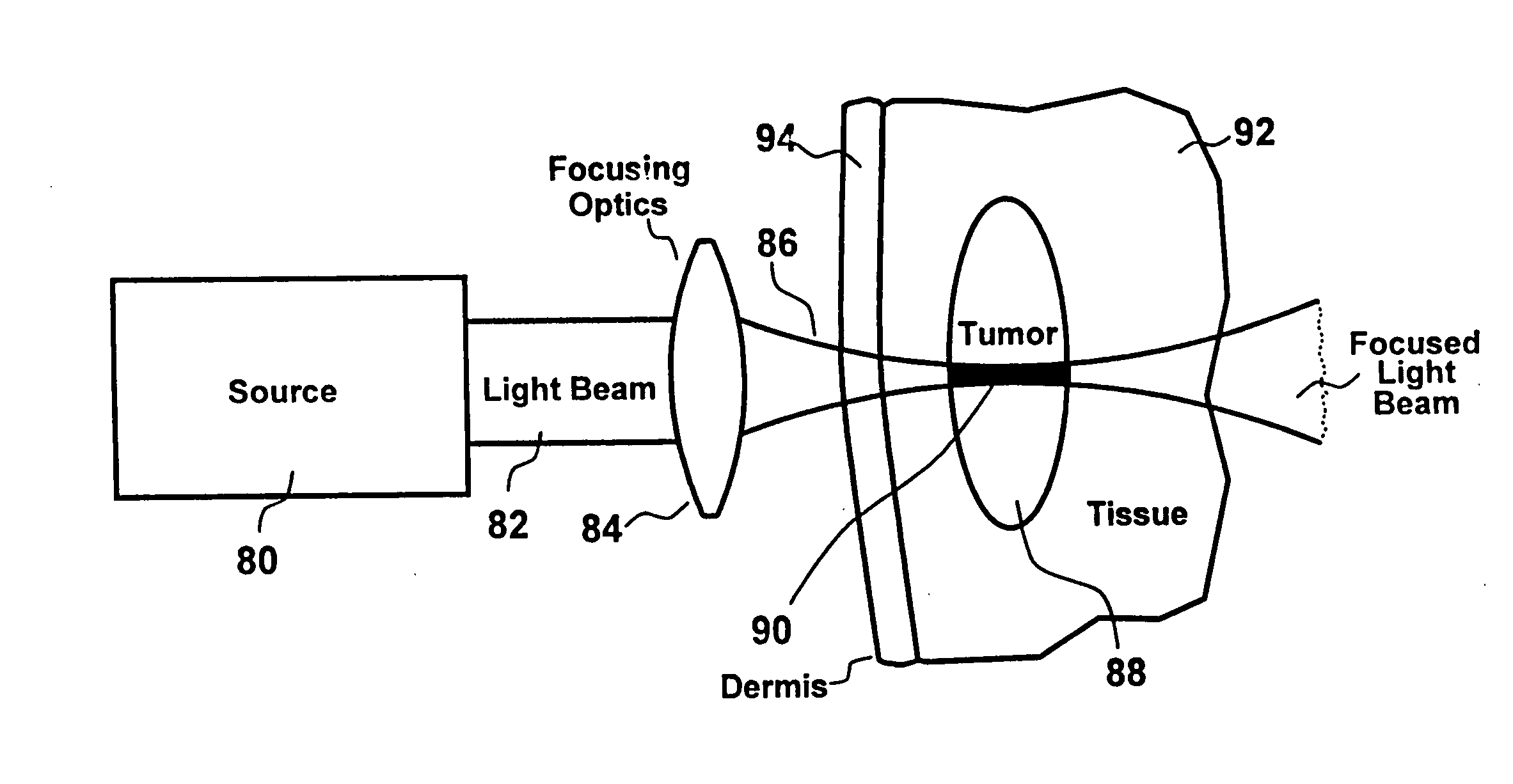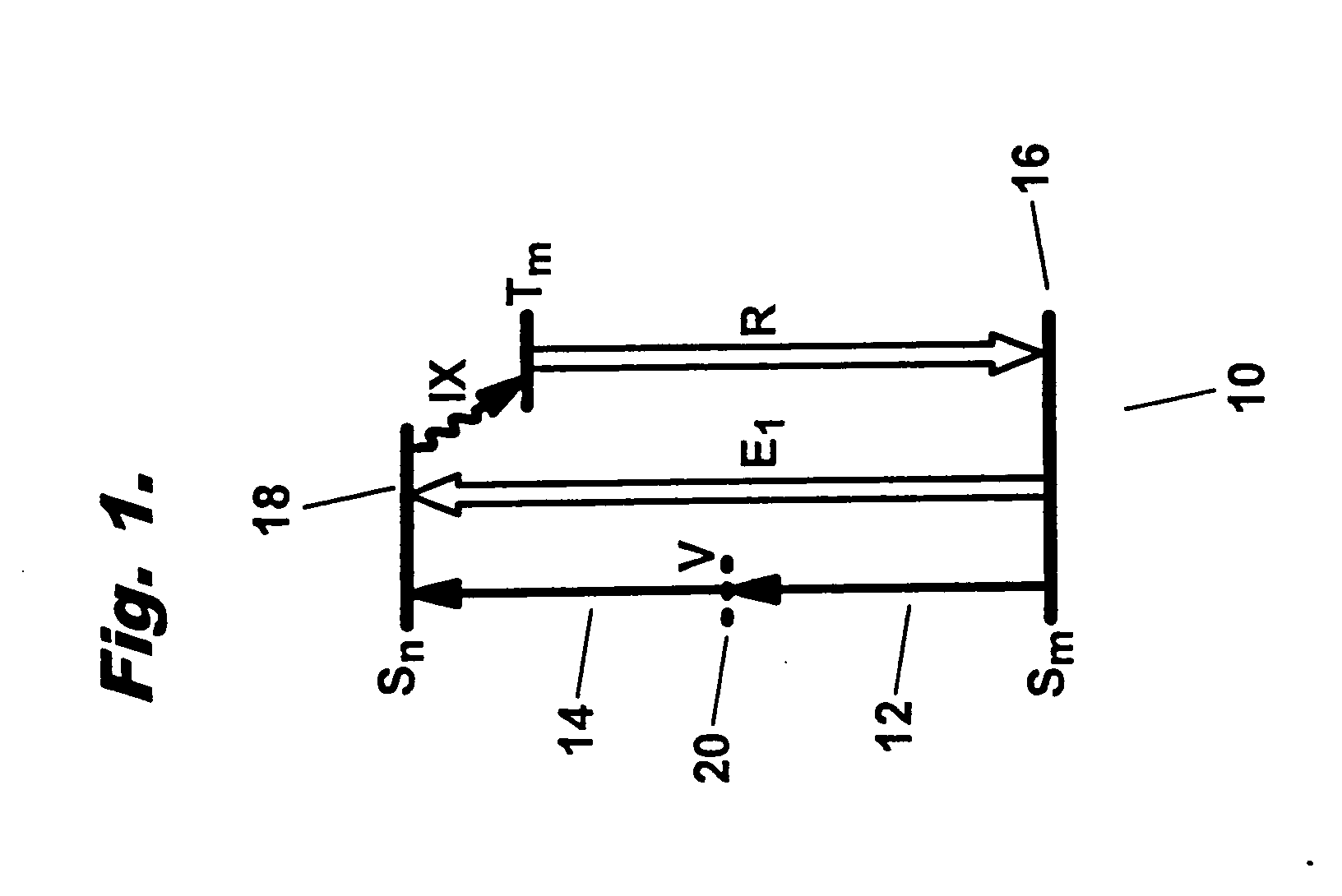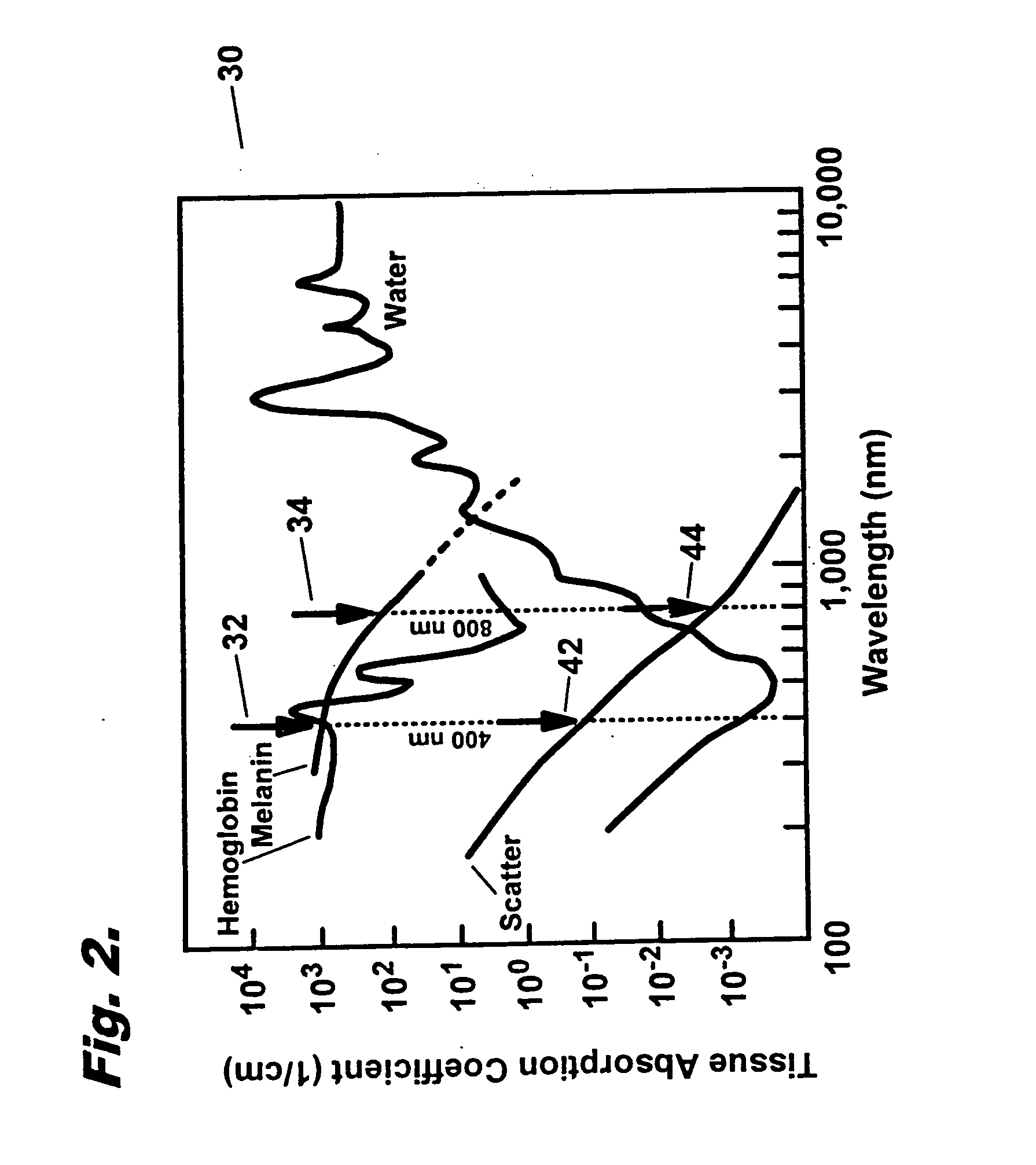Treatment of pigmented tissue using optical energy
a technology of optical energy and pigmented tissue, which is applied in the field of treatment of pigmented tissue using optical energy, can solve the problems of life-threatening, difficult to treat, and inability to achieve the effect of enhancing the effectiveness of endogenous pigments and enhancing the effect of photoactivation
- Summary
- Abstract
- Description
- Claims
- Application Information
AI Technical Summary
Benefits of technology
Problems solved by technology
Method used
Image
Examples
Embodiment Construction
[0035] The present invention is directed to a method and apparatus for treating pigmented tissues using light. Such treatment includes the following photochemical outcomes of therapeutic value: (1) the elimination of undesirable pigmentation in pigmented tissues through photobleaching; and (2) the permanent destruction of pigmented tissues through photochemical conversion of pigments into phototoxic products. More specifically, simultaneous two-photon excitation is used to photochemically convert endogenous or exogenous pigments into desired photoactive products, resulting in the desired photobleaching or tissue destruction. Photobleaching is used to reduce or eliminate undesirable coloration of tissue, such as that in moles, freckles, hair follicles and tattoos. The production of phototoxic products may be used to preferentially kill pigmented tumor cells or other undesirable tissues while sparing normal cells. Significantly, the methods and apparatus in the present invention used ...
PUM
 Login to View More
Login to View More Abstract
Description
Claims
Application Information
 Login to View More
Login to View More - R&D
- Intellectual Property
- Life Sciences
- Materials
- Tech Scout
- Unparalleled Data Quality
- Higher Quality Content
- 60% Fewer Hallucinations
Browse by: Latest US Patents, China's latest patents, Technical Efficacy Thesaurus, Application Domain, Technology Topic, Popular Technical Reports.
© 2025 PatSnap. All rights reserved.Legal|Privacy policy|Modern Slavery Act Transparency Statement|Sitemap|About US| Contact US: help@patsnap.com



